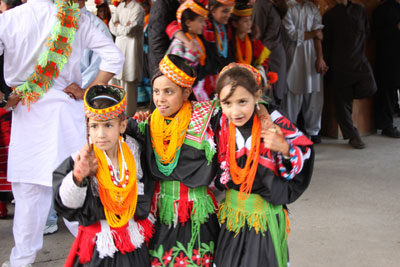In the Hindu Kush of Pakistan
This item appears on page 24 of the January 2016 issue.
Ever since 9/11, Pakistan has not been considered a tourist hot spot, but it is a mix of many cultures, with thousands of years of history and some awesome landscapes.
My friend BoKyun and I spent 15 days there with Wild Frontiers Adventure Travel (78 Glentham Rd., London, England, SW13 9JJ, U.K.; 844/867-4928, www.wildfrontierstravel.com), May 10-25, 2014. The company provides small-group and custom tours to unusual destinations and is one of the few companies that go to Pakistan.
Wild Frontiers’ staff was efficient and responsive. The land price for our trip was $4,100, with all meals included.
Our tour concentrated on one area, the Hindu Kush, a long, high mountain range, part of which forms the border with Afghanistan. The Pakistani government is just starting to build modern roads there, but tourism is new and guest houses are spartan.
We started the trip by flying to Pakistan’s capital, Islamabad, a modern city with broad, tree-lined streets. The locals are fond of their massive Faisal Mosque.
After transferring to a 4-wheel-drive jeep with an excellent guide and a skilled driver, the two of us were off to the mountains, where we experienced nine days of driving on unpaved one-lane trails.
We crossed into the valleys via the Lowari Pass — roads with lots of hairpin turns going up and down the mountains. One mountain had 14 such loops!
After a full day, we were glad to arrive at the small town of Chitral. One highlight there was watching a polo game, a favorite sport in the mountains.
On a trail just wide enough for the jeep, we went to the village of Balanguru. There we met the Kalash people, a colorful culture practicing an ancient form of Hinduism that has managed to survive in a Muslim country. They grow grain and vegetables in the valleys and herd sheep and cattle in the mountains. Extended families live in small one- or 2-room homes.
Despite laws in Pakistan against liquor, the Kalash produce an araq, distilled from fermented mulberries. Diluted 1:5 with fruit juice, I found it very comforting.
The most striking feature of the Kalash was the women’s clothing. I do not know how, all day, every day, they kept it so clean and bright in a dusty environment. For dress-up, they merely added bead necklaces.
We stayed in a guest house where the hot water came in a bucket in the morning. The people were very hospitable.
We were lucky to attend the spring festival of the Kalash. Mostly, drums accompanied line dancing, which ranged from sedate to vigorous. Occasionally, the women would form a semicircle and chant. At the end, a shaman and the villagers waved willow branches to drive away bad spirits.
As we drove north slowly on rocky, bumpy roads, we saw farmers and herders living much as they have for hundreds of years. Fuel was scarce, but there were many poplar groves from which the locals harvested branches for firewood. The scenery was fantastic, and there was only a handful of foreign tourists.
We traveled over the Shandur Pass to the beautiful Hunza Valley and spent three days at the historic village of Karimabad. There we saw the centuries-old Baltit Fort, a UNESCO World Heritage Site that has been restored. Interior doors were carved in Buddhist fashion centuries ago while that religion was still significant in the region.
We stayed at a modern hotel aptly called the Hunza Eagle’s Nest Hotel, situated 1,640 feet above the valley. From the roof, we could see seven mountains that were about 23,000 feet high. Ancient petroglyphs overlooked what was once a branch of the Silk Road.
Then it was on to Gilgit on the Chinese-Pakistan Karakoram Highway. (Finally, we were on pavement again!) This was once a British frontier garrison town.
It was a long day’s drive back to Islamabad, a trip made enjoyable by watching the brilliantly decorated long-distance trucks. Each owner chooses the colors and motif for his truck. Garlands, propellers, bells and chimes may be added (hence the name “jingle trucks”). And more huge mountains! From one site, we could see three mountain ranges: the Hindu Kush, the Karakoram and the Himalayas.
I enjoyed both the history and seeing large scenic areas not yet spoiled by pollution or mass tourism. It was a mind-bending experience.
TOM LaRUE
Ithaca, NY

